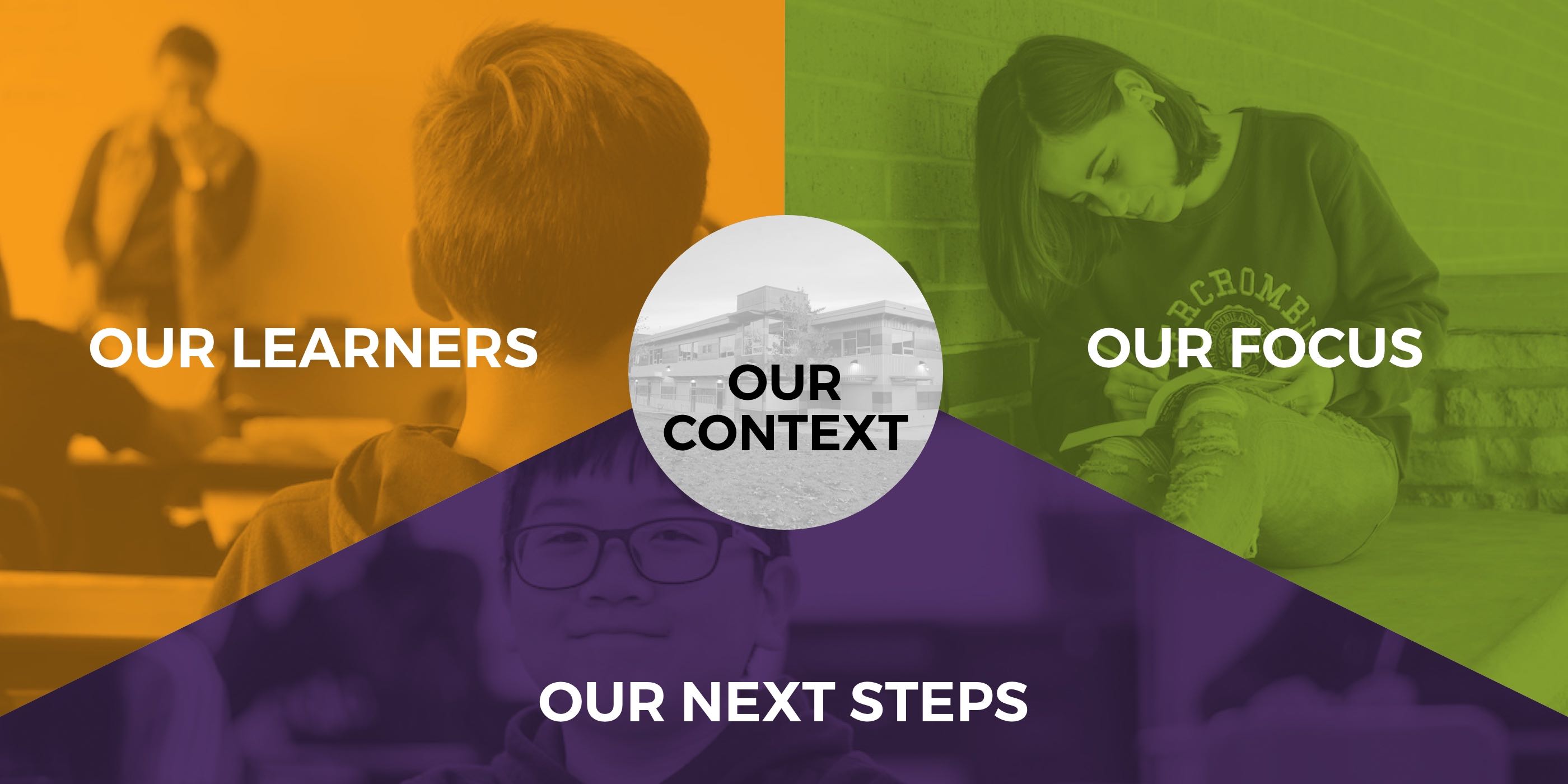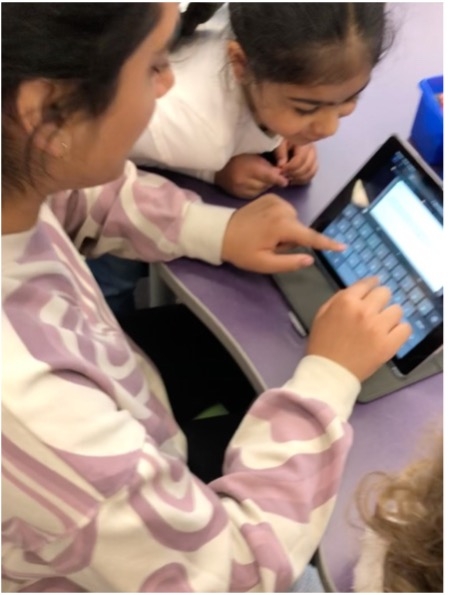Semiahmoo Trail Elementary 24-25


OUR CONTEXT
OUR LEARNERS
At Semiahmoo Trail, we welcome each learner by recognizing and supporting their unique writing journey. Our educators assess students at their current writing levels and identify the specific skills needed to strengthen their writing and communication abilities.
Literacy is fundamental to all learning and is integrated across all areas of the curriculum. It involves the ability to understand, critically analyze, and create a wide range of communication forms, including oral, written, visual, digital, and multimedia, in order to achieve personal, academic, and social goals.
Guided by the BC curriculum, we support writing development through collaborative learning and creative engagement. Our educators use tools such as Story Workshop and strategies like peer conferencing to help students document their growth and work toward specific writing goals.
Students learn to appreciate the power and beauty of language as they create their own literary works, often inspired by texts they have read or viewed. As they revise and edit their writing to achieve the desired effect, they continue to develop their skills and confidence as writers.
We gather evidence of progress through before-and-after writing samples, student reflections, and teacher observations. This evidence informs our next steps, ensuring that instruction remains responsive and aligned with each learner’s development as a writer.
It is demonstrated, through evidence gathered from our cohort of students and reflected in the larger group students, that our writing focus is positively impacting learners. Writing goals included:
- Exchanging ideas and perspectives to develop shared understanding
- Using writing and design processes to plan, develop, and create text for a variety of purposes and audiences
- Using the features and conventions of language to express meaning in their writing and representing

Teacher Observations:
"Many students found so much joy creating stories with their little buddies. Trying to explain their ideas to younger students helped them be more descriptive and thoughtful with their language"
"Younger students loved sharing their stories with older students who could them help them write their words in Book Creator, it was very motivational for students to want to improve their storytelling"
Student Reflections:
"I think making my story with my little buddy helped me think through the details and process better. My writing has improved because now I can see it in my head even if I did not have the storyworkshop stuff. I was surprised how much my little buddy helped me think of imaginative stories to tell"
"I like building my stories first because I can't write yet but I think I am getting better"
Kindergarten Story Samples


OUR FOCUS
At Semiahmoo Trail, students engage daily in meaningful literacy experiences designed to foster a love of reading and writing while building essential skills for real-world communication. Our focus is on strengthening foundational competencies, particularly through the writing and design processes used to create texts for diverse purposes and audiences.
To support this work, we implemented an early literacy approach that highlights the connection between play, art, and writing with tools such as Story Workshop and Book Creator. In addition, we are fostering collaboration by pairing younger and older students to explore storytelling through shared play and dialogue. To track growth in writing confidence and understanding, we collected writing samples before and after the workshops, along with teacher observations and student reflections.
Student Learning Goals
- Develop and understand voice to build confidence as writers through story
- Use writing and design processes to plan, develop, and create texts for a variety of purposes and audiences
- Exchange ideas and perspectives to build shared understanding.
- Use language in creative and playful ways to develop style
We are gathering insights from a cohort that includes both Kindergarten and Grade 6 students. While each student is working toward goals aligned with their grade-level curriculum, we are also exploring the relationships between younger and older learners. Our aim is to foster creativity, mentorship, and a deeper appreciation for the power of writing through these cross-age connections.
Our students can use digital tools to exchange ideas and perspectives, fostering deeper understanding and collaboration.

Grade 6 and Grade 1 students co-creating a story in Book Creator.


OUR NEXT STEPS
Evidence of learning collected over several months showed an increase of proficiency in 30% of kindergarten students and 20% in grade 6 students in relation to the learning standards.
Kindergarten: Students can plan and create stories by experimenting with print and storytelling by communicating effectively and using manipulatives (story workshop materials)
Grade 6: Students can use writing and design processes to plan, develop, and create engaging and meaningful literary texts using characterization, mood and imagery.
There was a noted improvement for all students identified in the sample cohort in relation to the writing goals. Our next steps will include more learning standards and the use of language from the provincial assessment scales. We would like to use common language to identify successes and remaining challenges. From here teachers will offer descriptive feedback in various formats to support individual students writing goals.
